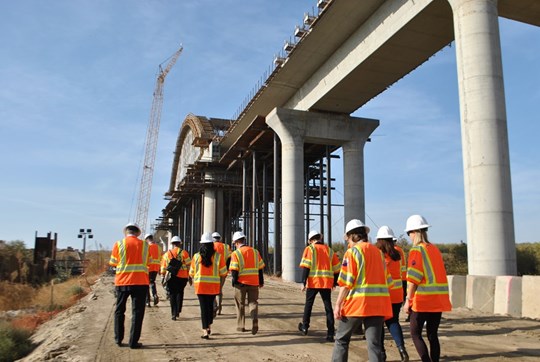Is California high-speed rail happening? Yes. But there has been so much misleading negation of the value of the project, in the media and elsewhere, that unless you live in the Central Valley you might not even realize it is the biggest ongoing construction project in the state, perhaps the nation.
Perhaps attention on the project is turning a corner. For example, KQED recently featured a detailed article updating extensive construction progress on the project and the benefits it is already bringing to Central Valley cities - although even that outlet felt the need to marble its post with a heavy dose of skepticism.
Also, Jon Switalski just hosted California High-Speed Rail Authority (CAHSRA) executive director Brian Kelly on the Rebuild SoCal Zone podcast. They talk about where the project is right now and how it got to this stage. For reference, that's 119 miles under construction in the Central Valley, and environmental clearance completed on about 300 miles of the total 400-plus miles, with more segments slated to clear this summer and in the next few years.
Of course funding is a large part of the discussion, as it should be for any project of this magnitude. Estimates of the project's cost have doubled from the first estimate of $45 billion - made before any design or environmental or right of way work had been done, around the time voters approved a $9 billion bond to get the project started.
"Given the costs, we have to do it in pieces," says Kelly. "This is how you have to do big projects." The total cost estimate is not out of line with other high-speed rail projects being built around the world, he added, saying that England is building a system that will cost about $110 billion.
Kelly also points out that building an equal amount of travel capacity via freeway and airport expansions would cost twice as much - and bring none of the clean energy or environmental benefits associated with a high-speed, electrified train.
"It's a bargain in contrast," he says.
Plans are to finish the first segment from Merced to Bakersfield by 2030. That first operating segment would serve several large cities, and provide connections to other cities on both ends. Meanwhile, the other segments are getting environmental clearance, to be followed by design, community outreach, and construction.
"We will advance segment by segment until it's done," says Kelly. "It's going to take time. It's going to cost money."
"But once Californians have a chance to experience it, I'm confident that the conversation will not be about how hard this is to get done. It will be about how we ever lived without it."
Listen to the Rebuild SoCal Zone podcast - it's about half an hour - at their website.






